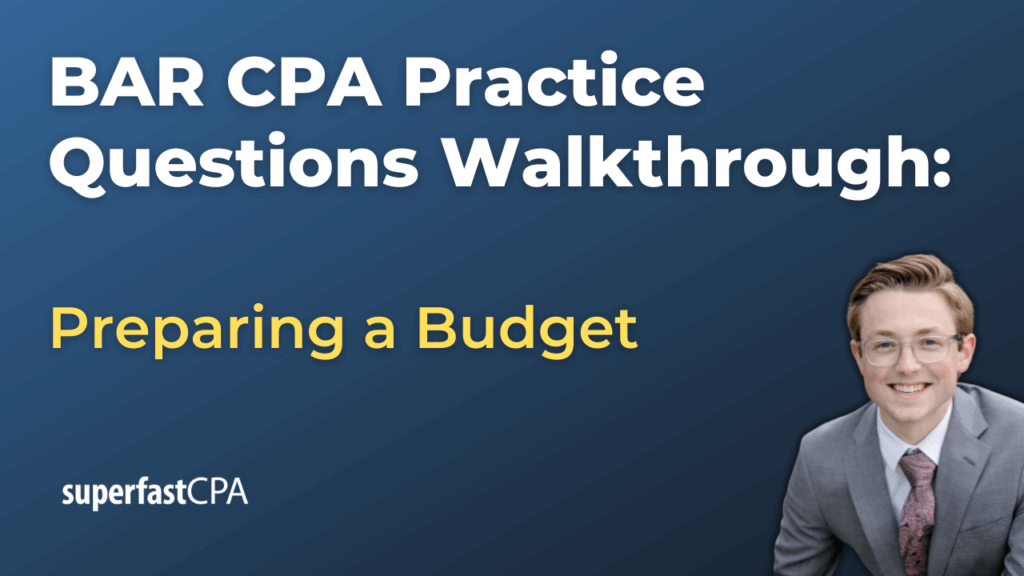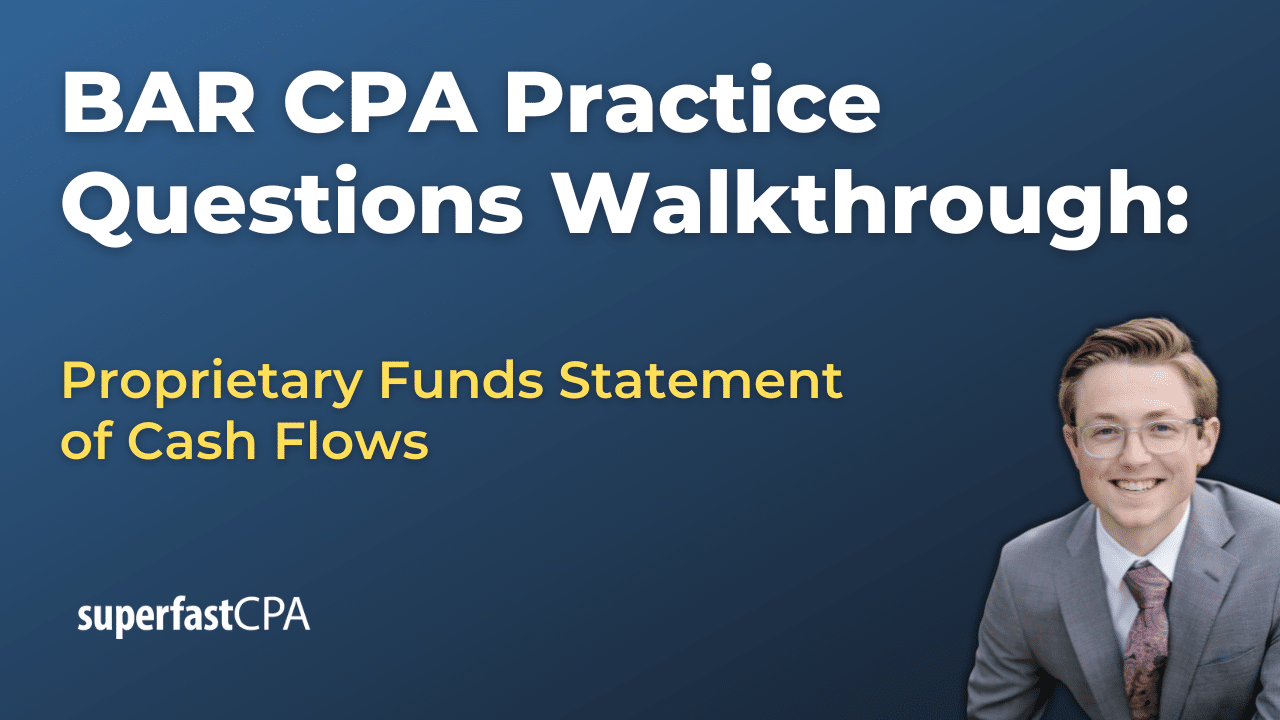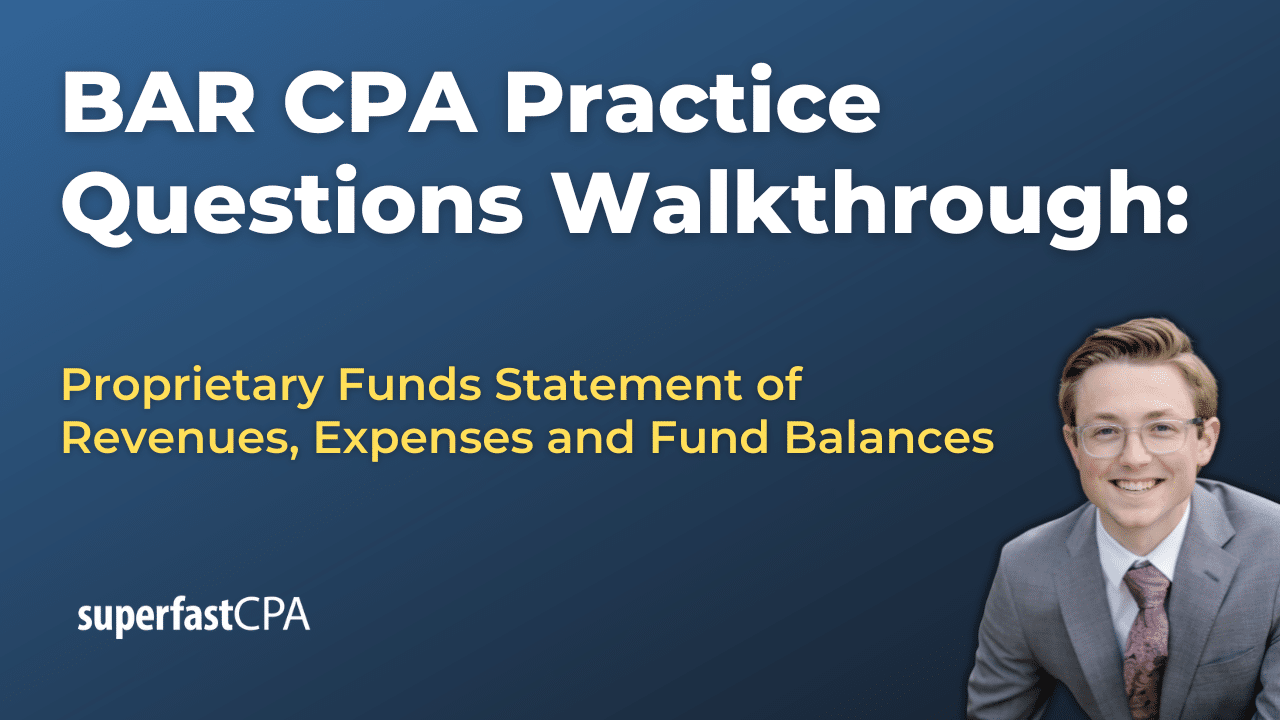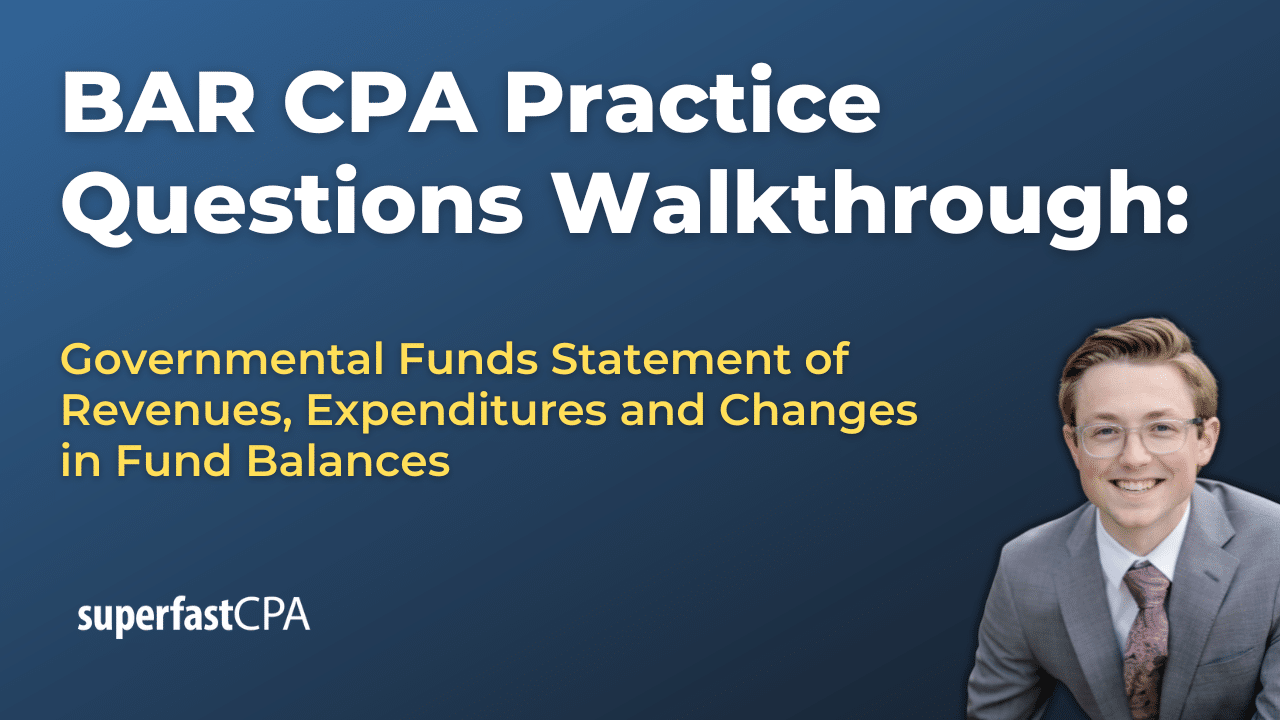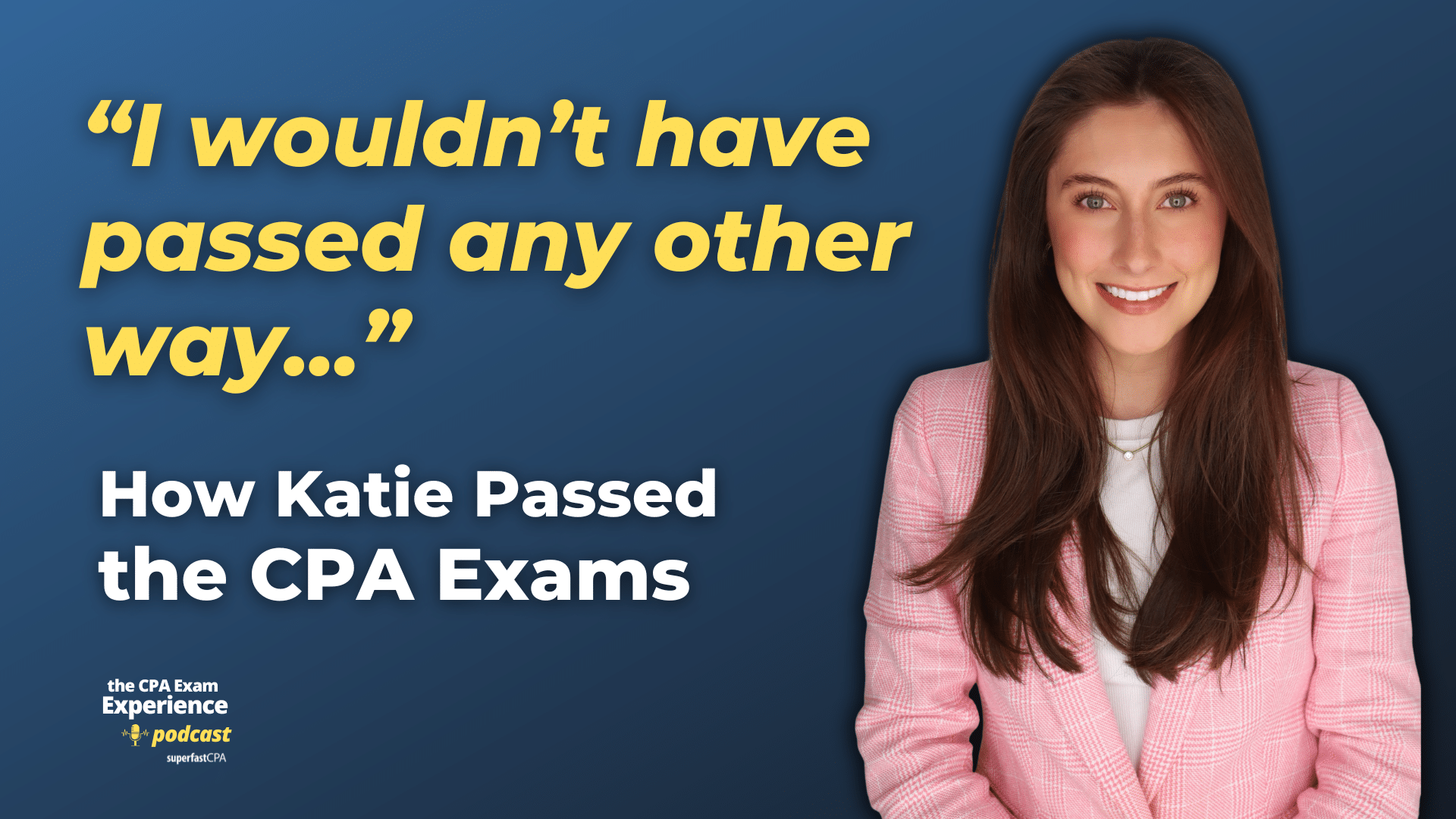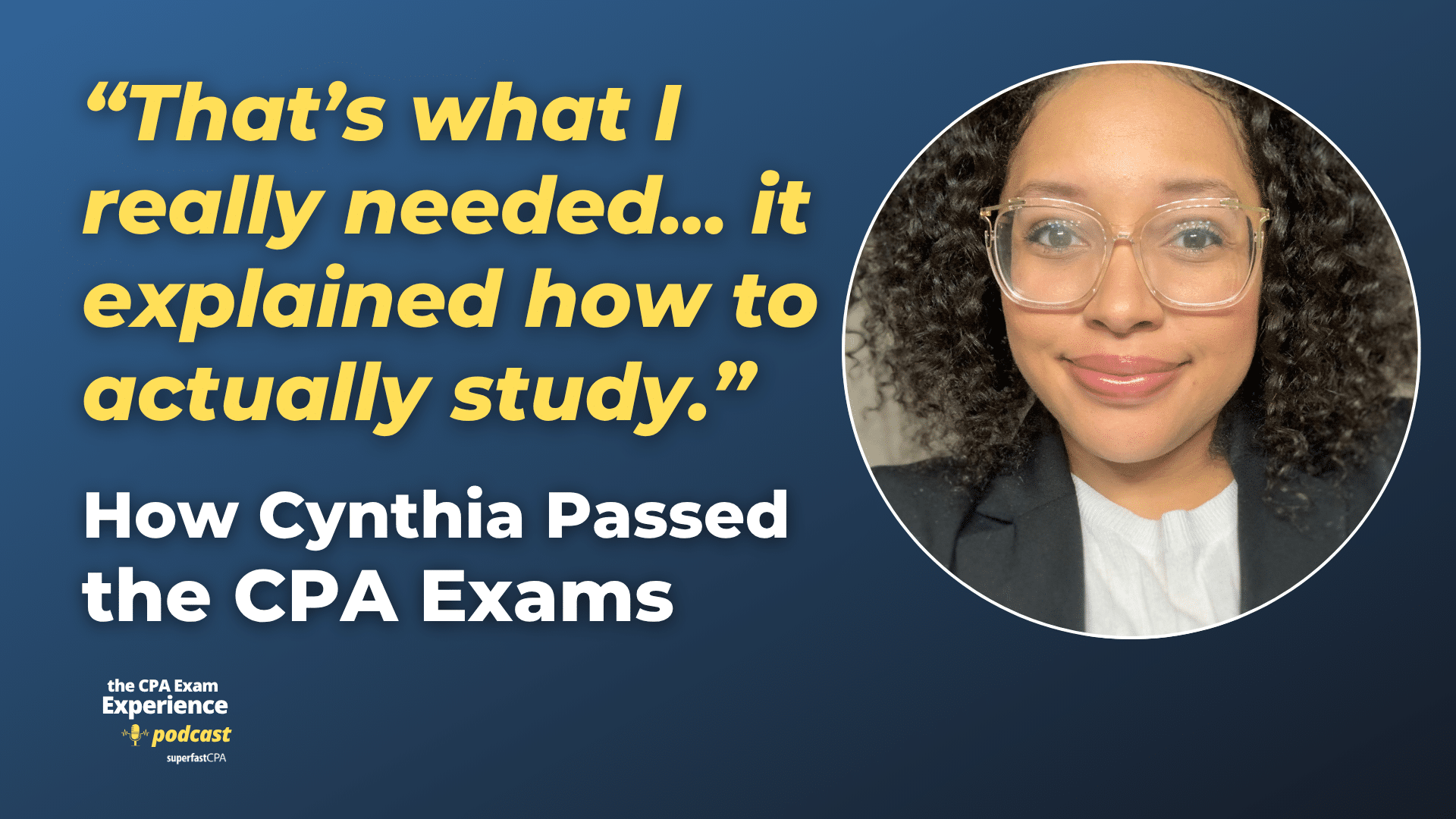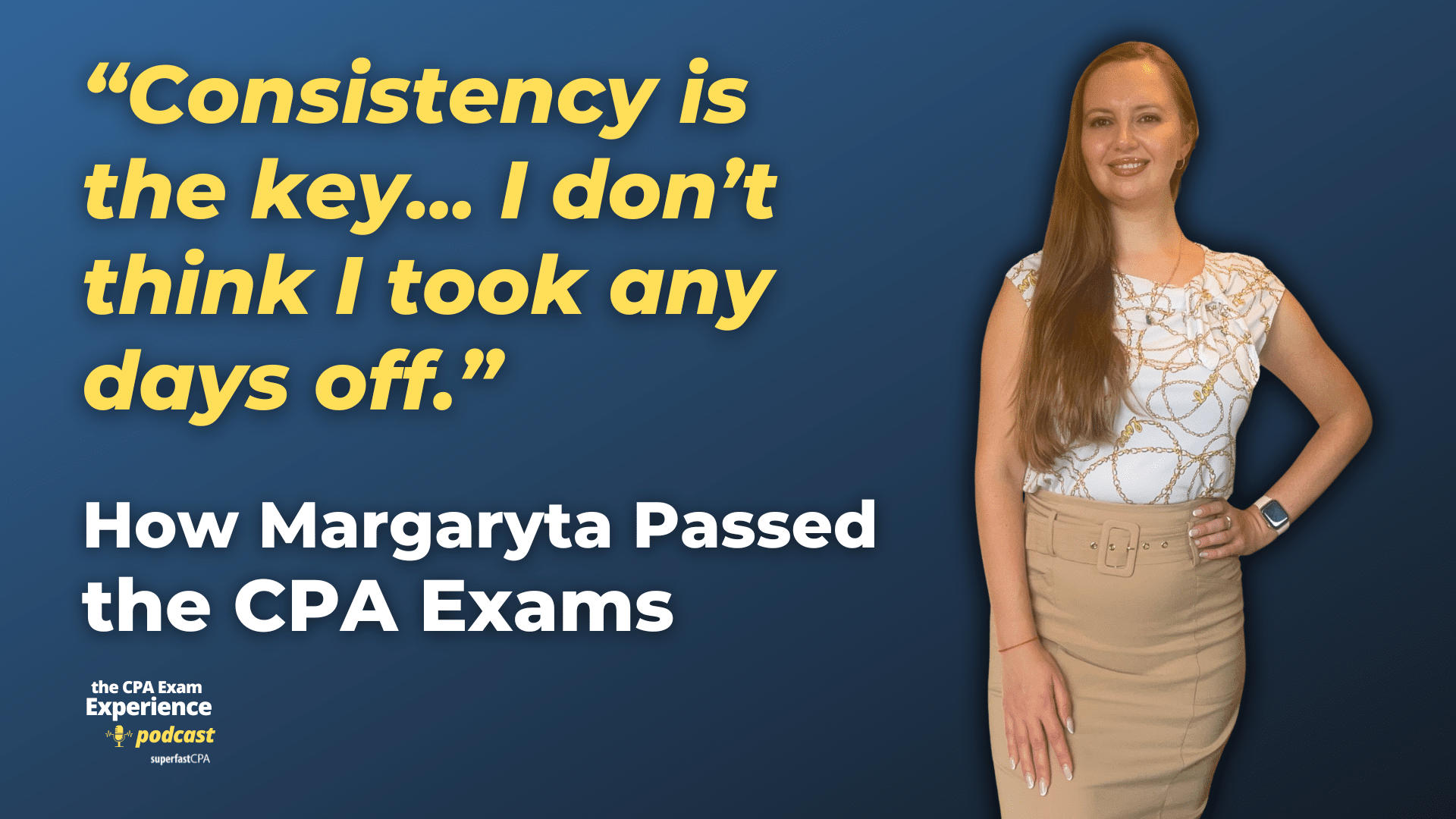In this video, we walk through 5 BAR practice questions teaching about preparing a budget. These questions are from BAR content area 1 on the AICPA CPA exam blueprints: Business Analysis
The best way to use this video is to pause each time we get to a new question in the video, and then make your own attempt at the question before watching us go through it.
Also be sure to watch one of our free webinars on the 6 “key ingredients” to an extremely effective & efficient CPA study process here…
Preparing a Budget
In the CPA BAR exam, candidates must demonstrate the ability to prepare budgets using clear, supportable assumptions. This involves more than just filling in budget templates. It requires a logical sequence, accurate cost behavior classification, and a consistent structure from one part of the budget to the next.
Below is an overview of the budgeting concepts covered through several multiple choice questions, along with examples to reinforce the key principles.
Budgets Begin with Sales and Flow in a Logical Order
A well-prepared budget begins with the sales forecast. This initial step drives the production budget, which in turn informs the direct materials, direct labor, and overhead budgets. Each budget depends on assumptions that are connected to the one before it.
For example, if a company expects to sell 5,000 units in July and wants to keep enough inventory for August, the production budget must reflect both sales and the desired inventory balance. The number of units to produce then directly affects how much material and labor will be needed.
The Production Budget Is Based on Sales and Inventory Levels
The purpose of the production budget is to determine how many units need to be manufactured. This is not always equal to the number of units expected to be sold. Instead, it factors in the desired ending inventory and the beginning inventory already on hand. The basic formula is:
Production = Sales + Desired Ending Inventory − Beginning Inventory
For instance, if a business plans to sell 10,000 units, wants to have 1,000 units in ending inventory, and already has 600 units in stock, the production budget would require 10,000 + 1,000 − 600 = 10,400 units to be produced.
Direct Materials Budgets Are Built from the Production Budget
Once production needs are known, the company can calculate how much raw material must be purchased. This calculation considers the number of units to produce, the quantity of material per unit, and inventory policies for raw materials.
Suppose each product requires 3 pounds of raw material. If the company needs to produce 12,000 units and wants enough ending material inventory for the following month’s production (with 4,000 pounds already in inventory), the direct materials purchases would be:
(12,000 units × 3 pounds) + desired ending inventory − beginning inventory
This ensures enough material is available for current production and future planning.
Merchandise Purchases Budgets Use Cost of Goods Sold and Inventory Targets
For merchandising companies that purchase finished goods, the purchases budget does not rely on unit-level production data. Instead, it is based on projected cost of goods sold (COGS) and inventory targets, usually expressed as a percentage of future COGS.
For example, if July sales are projected at $300,000 and COGS is 60 percent of sales, July COGS would be $180,000. If the company wants ending inventory equal to 75 percent of August’s COGS (which is $192,000), then ending inventory should be $144,000. If beginning inventory is $134,000, purchases would be calculated as:
$180,000 + $144,000 − $134,000 = $190,000
This method aligns purchases with expected sales and inventory goals.
Flexible Budgets Adjust for Changes in Activity Levels
A flexible budget allows companies to adjust their cost expectations based on actual activity levels rather than static assumptions. The key step is to distinguish between variable and fixed costs. Variable costs change with the level of production, while fixed costs remain constant within a relevant range.
To create a flexible budget, follow these steps:
- Determine the variable cost per unit for each category (materials, labor, variable overhead).
- Multiply each per-unit cost by the new number of units.
- Add in fixed costs, which remain unchanged.
For example, suppose a company budgets $48,000 in direct materials for 5,000 units, or $9.60 per unit. If production increases to 6,000 units, direct materials should be budgeted at 6,000 × $9.60 = $57,600. Repeat the process for labor and variable overhead. Fixed overhead stays the same, and the total becomes the flexible budgeted cost for the new volume.
Conclusion
Preparing a budget using supportable assumptions means structuring the budget in a logical sequence, using valid inputs, and applying accurate cost behavior. Each component of the budget is connected to the others, and every figure must be supported by either past data or company policy.
Whether you are estimating material purchases or adjusting a budget for higher output, the key is to ground every number in a formula or rationale that can be explained. This approach not only helps on the CPA exam, it reflects how effective budgeting is done in practice.

